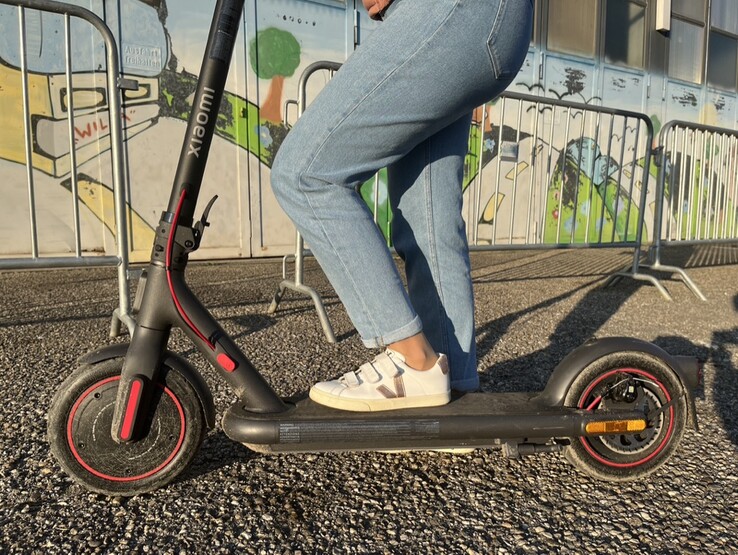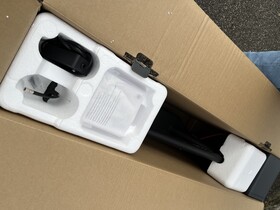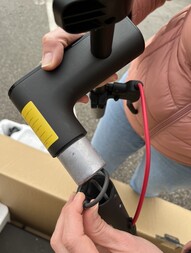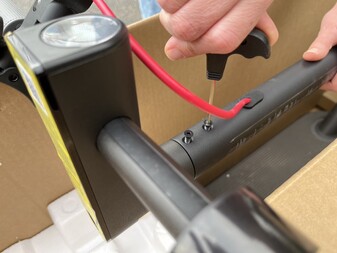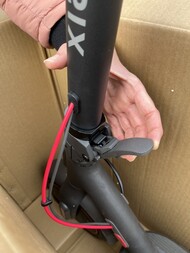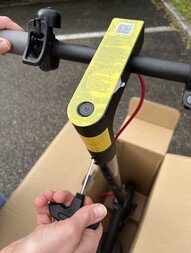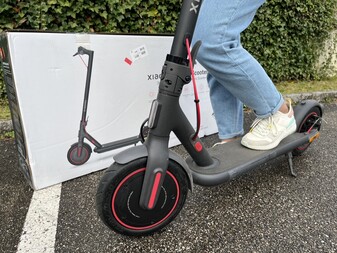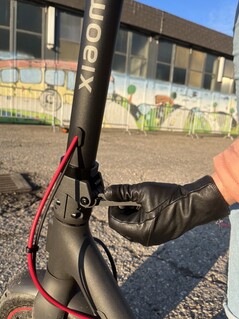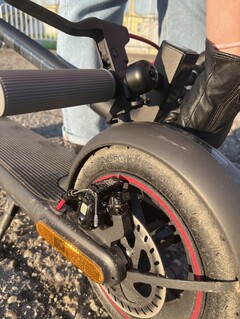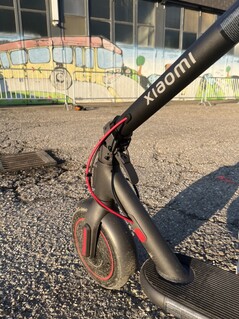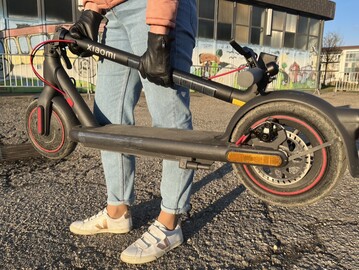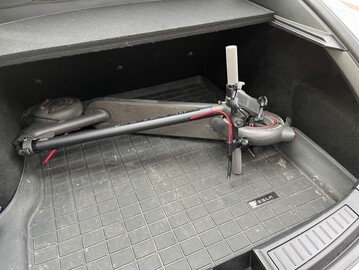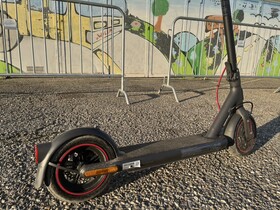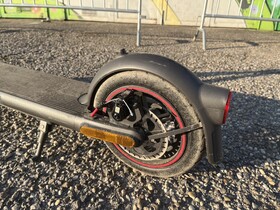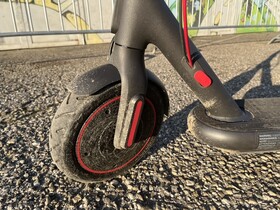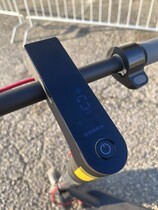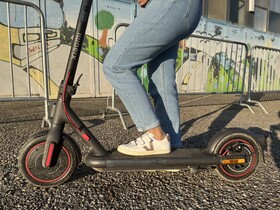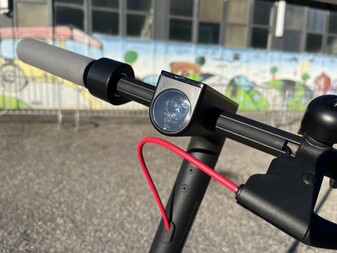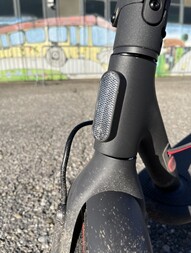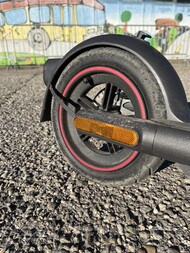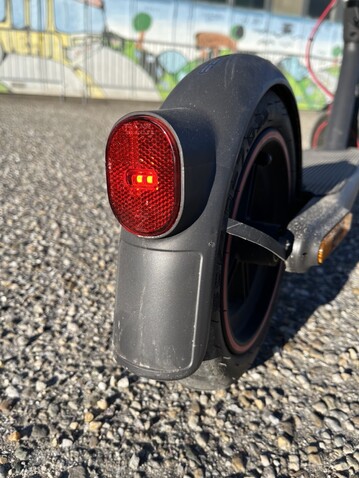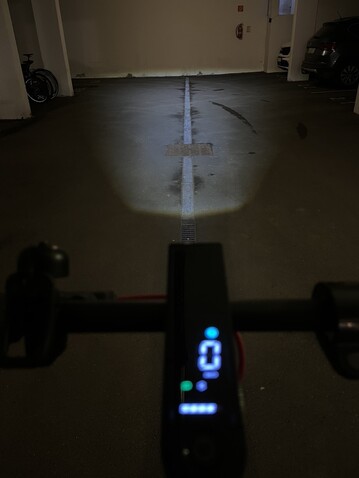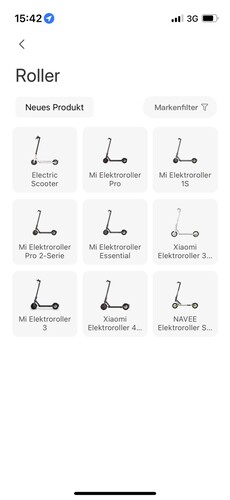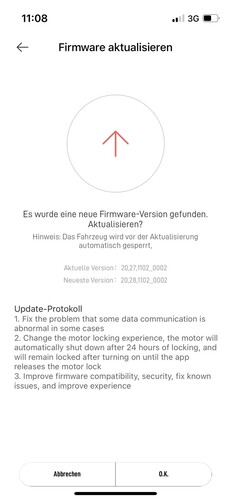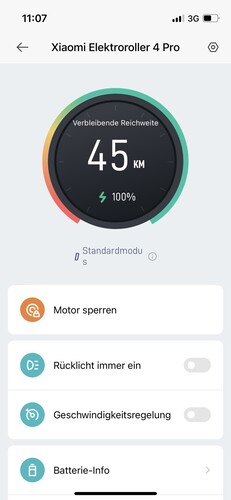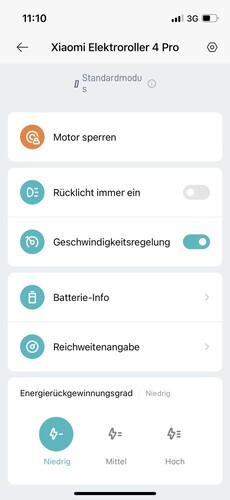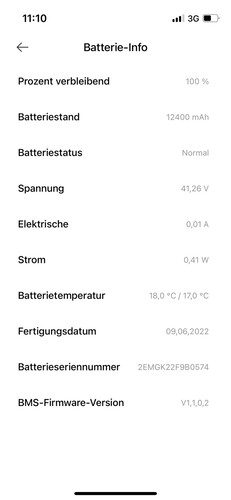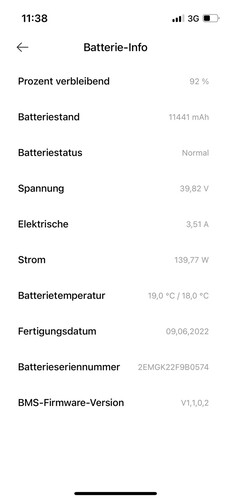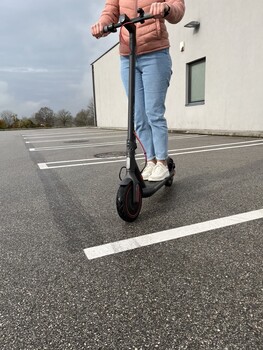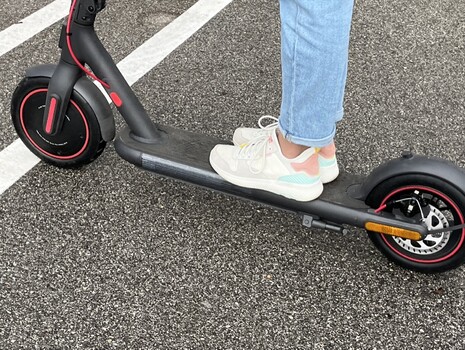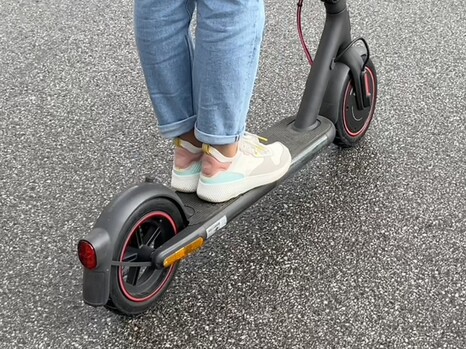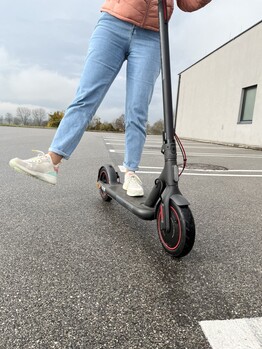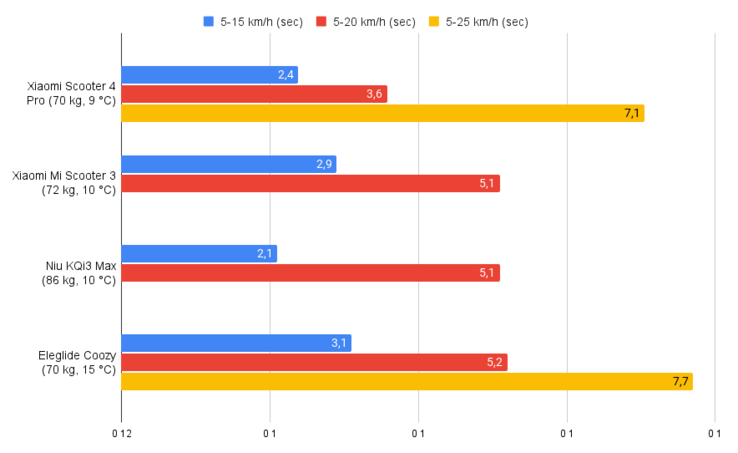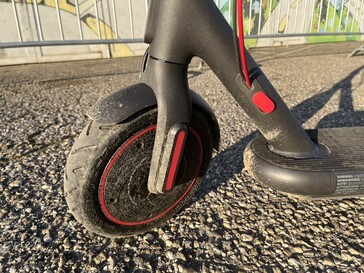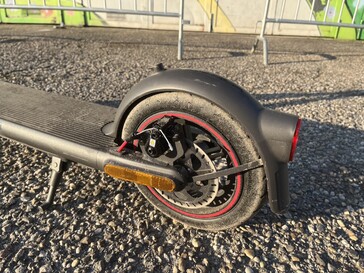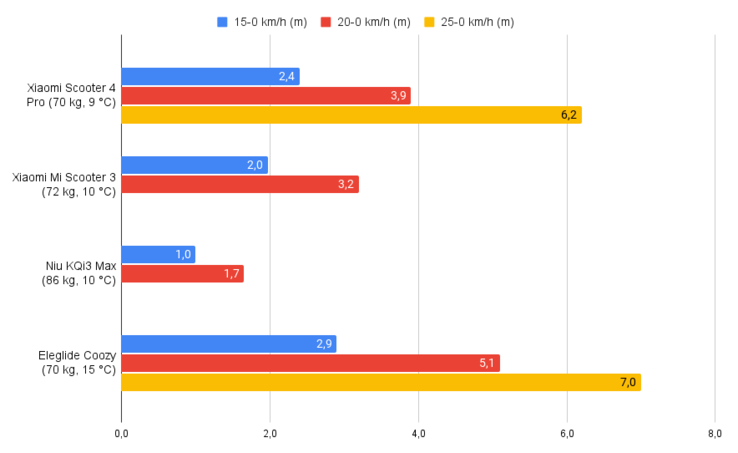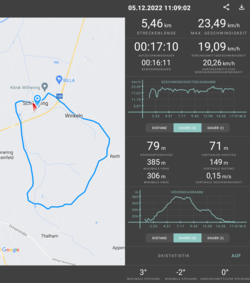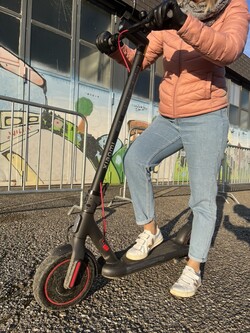Xiaomi Electric Scooter 4 Pro in review: Does the top of the line scooter deliver what it promises?
Xiaomi lists four different e-scooter models in its store (excluding any special editions): The Mi Electric Scooter 1S with up to 30 km (~19 mi) range, 20 km/h (~12 mph) top speed, 12.5 kg (~28 lb) weight and a price of around 470 Euros (~$512), the Mi Electric Scooter Pro 2 with up to 45 km range (~28 mi), 20 km/h (~12 mph) top speed, 14.2 kg (~31 lb) weight and a price of around 580 Euros (~$632), as well as the Mi Electric Scooter 3 with around 30 km (~19 mi) range, 25 km/h max. (~15 mph) speed and a weight of 13 kg (~29 lb) at a price of 530 Euros (~$577), whose test we will publish shortly.
| Mi Electric Scooter 1S | Mi Electric Scooter Pro 2 | Mi Electric Scooter 3 |
Xiaomi Electric Scooter 4 Pro | |
|---|---|---|---|---|
| Max. Range (according to manufacturer)/battery capacity | 30 km/275 Wh | 45 km/474 Wh | 30 km/275 Wh | 55 km/446 Wh |
| Top speed | 20 km/h | 20 km/h | 25 km/h | 25 km/h |
| Rated power/maximum power | 300 W/600 W | 300 W/600 W | 300 W/600 W | 350 W/700 W |
| Max. Gradeability | 14 % | 20 % | 16 % | 20 % |
| Weight | 12.5 kg | 14.5 kg | 13.2 kg | 17.4 kg |
| Tires | 8.5 in. | 8.5 in. | 8.5 in. | 10 in |
| Max. load | 100 kg | 100 kg | 100 kg | 120 kg |
Technical data - Xiaomi promises a long range
The Electric Scooter 4 Pro already clearly outshines its sibling models in terms of its specifications, which are: up to 55 km range (~34 mi), 25 km/h (~15 mph) top speed, up to 700 W maximum power with a total weight of a substantial 17.4 kilograms (~38 lb). Xiaomi pays well for the extra performance, range and features with a price of around 750 Euros (~$817).
| Xiaomi Electric Scooter 4 Pro | |
|---|---|
| battery | 446 Wh (12.4 Ah) |
| Drive | Front wheel drive (350 watts rated, 700 watts max.); max 20% incline |
| Top speed | 25 km/h; three-stage adjustable to 6 km/h (~4 mph, push mode), 20 km/h, 25 km/h (~12 & 15 mph); |
| Range | up to 55 km (~34 mi) |
| Charger | 42 V 1.7 A, corresponds to 70 Watt, charging time about 8-9 h |
| Payload | 120 kg (~265 lb) |
| Dimensions | 112 x 49 x 124 cm (~3.7 x 1.6 x 4.0 feet) |
| Tires | 10-inch pneumatic tires |
| Brake system | mechanical disc brake (rear) + electronic brake/E-ABS (front) |
| Weight | 17,4 kg (~38 lb) |
| Lighting/Safety | LED light front/rear, brake light (flashing); E-ABS; IPX4 (protection against splashing water on all sides) |
| other features | rubberized running board (15 cm/6 in, wide), operating permit for DE available (20 km/h model) |
| Manufacturer page | Xiaomi AT |
Unboxing and assembly - 4 screws and off you go for a (wild) ride
The carton in which the Electric Scooter 4 Pro is delivered has a printed quick start guide ready on the inside when opened, with which the scooter is ready for use in no time. Unpack it, fold up the folded vertical handlebar and snap it into place, put on the handlebar and fix it in place using four screws. An Allen wrench with an ergonomic handle is included, and no tools are needed other than a knife to open the box. There is also an extensive manual in several languages, but it is not really needed. By the way, you can start driving right after unpacking, the installed Li-Ion batteries are already pre-charged!
As is usual for most e-scooters, the battery is also permanently installed in the Xiaomi 4 Pro and cannot be removed. This means that the entire scooter has to be transported to a charging station. With a total weight of 17.4 kilograms (~38 lb), a staircase that has to be overcome could already be a challenge. The charger weighs around 400 grams (~0.9 lb), has a cable length of around 3 meters (~10 feet) and can thus be carried around if required.
The foldable vertical handlebar can be fixed to the rear wheel with a strap and can thus be used as a carrying handle. The process only takes a few seconds, the locking mechanism on the handlebar makes a very solid and secure impression and is easy to operate. When folded, the scooter can be carried over obstacles and stowed in the trunk. The scooter is somewhat more compact than, for example, the tested Eleglide Coozy.
Structure, equipment and operation - Xiaomi Scooter 4 Pro is fully roadworthy
Aluminum dominates the construction material of the Scooter 4 Pro. The scooter features the typical aluminum tube design of the Xiaomi line, which makes it look lighter and more agile than it actually is. The stability leaves nothing to be desired and the workmanship is also on a high level. Within the Xiaomi family, the Pro 4 sets itself apart with a payload of up to 120 kg (~265 lb). In terms of color, the entire scooter is kept in a black-gray tone. Accents are set by the red-sheathed brake cable, the red cover of the charging socket and the striking red rings in the tires.
The scooter's high weight is primarily due to the large installed battery. Compared to models with similar capacity or range, such as the Eleglide Coozy, it is even minimally lighter. The dimensions of the scooter amount to 120 cm in length, 124 cm in height and the handlebar with a width of 49 centimeters (~3.7 x 4.0 x 1.6 feet). The footboard measures around 15 x 50 cm (~6 x 20 in) and allows just about a parallel foot position in the direction of travel, although not quite as comfortable as our comparison device, the Eleglide Coozy. The handlebar sits at a height of 102 cm (~40 in) when viewed from the footboard.
The Xiaomi Scooter 4 Pro is controlled via a central control button under the small display in the center of the handlebar. Here, the scooter can be switched on and off, the riding mode can be selected and the light can be activated or deactivated. The display shows the speed, but not the kilometers driven. The range is displayed via a schematically depicted battery cell with 5 segments, each corresponding to 20 percent.
Lighting equipment - "black hole" in front of the scooter
The Xiaomi scooter has an LED front spotlight, an LED rear or brake light (flashing red), reflectors on the sides in the rear area and an additional, forward-facing reflector (white) above the front wheel. A corresponding symbol on the display informs the driver when the light is activated. Unfortunately, the Scooter 4 Pro does not have a turn signal, so a change in direction may have to be indicated with the arms, which requires practice, because an e-scooter is very difficult to drive with one hand.
The LED front spotlight provides a bright cone of light that illuminates the area from 3 to around 17 meters (~10 to 56 feet) in front of the scooter well. This means that driving in the dark works well in itself, but there is a "dead zone" between the scooter and the beginning light cone. There is a risk of overlooking small obstacles directly in front of the e-scooter and thus being thrown off balance.
App - More info and setting options
In order to make further settings or read out information, the Xiaomi Home app has to be installed and the scooter has to be paired with the smartphone. This process was a bit tedious for our review sample, since it was still assigned to another account and had to be removed first. This should not be a problem with a new device, but care must be taken with used models.
After the scooter was "unlocked" again, the pairing process was quick and the QR code on the scooter itself was helpful.
The remaining range in kilometers and the battery status in percent can now be read out in the Xiaomi Home app. It is also possible to lock the motor and protect the scooter against unauthorized use. Of course, this is not a physical protection considering the e-scooter could still be carried away or pushed, even if the scooter desperately calls for help in the form of quiet beeping noises in the latter case. It is therefore advisable to carry an old-fashioned bicycle lock.
Under the other menu items, the rear light can be set to "always on", the speed control, i.e. cruise control, can be activated or deactivated and additional information about range and battery can be called up. The degree of energy recovery/recuperation or the electronic braking effect can also be selected in three stages.
We miss an option for deactivating the kickstart, as offered by the Eleglide Coozy, for example (caution, may not be permitted in the respective country). An adjustment option for the cruise control would also have been helpful, since it was sometimes a bit tricky to handle. More about that a bit later.
Ride performance and comfort - Very agile and good climbing ability
Depending on the selected driving mode, but especially in Sport mode, the performance of the Xiaomi Electric Scooter 4 Pro is immediately noticeable when the speed control is pressed for the first time. It accelerates noticeably fast, which will put a smile on the faces of experienced scooter drivers, while newcomers might be surprised by the agility.
Xiaomi promises a lot of technology in the tires. Tubeless 10-inch pneumatic tires are used, which have particularly shock-absorbing properties thanks to "DuraGel" construction and are also supposed to be self-sealing. At least that is what the Xiaomi product page promises. In the practical test, we experience the ride comfort expected from tires of this size without any particularly noticeable advantages or disadvantages. Slight bumps are no problem, but potholes or low curbs of a few centimeters or more should be avoided. The Scooter 4 Pro also wants to be driven on roads that are as good as possible.
The turning circle (pushed) is just 1.3 meters (~4.3 feet), which makes the e-scooter considerably more maneuverable than the Niu KQi3 (here in the test) or the Eleglide Coozy.
The Scooter 4 Pro from Xiaomi has three selectable driving modes. To switch between them, the central control button below the display has to be pressed twice. A single click activates or deactivates the light. The "pedestrian" mode is a kind of push assistance, for example when the scooter has to be pushed uphill. The speed here is limited to a few km/h and the scooter responds rather leisurely. Problem: To activate the motor, you either have to push or "start" the scooter briskly for a short time or perform a kick start and "accelerate" at the same time, only to jump off again immediately afterwards. Especially in the case of pushing assistance, it would be considerably more comfortable if the motor could be controlled from a standstill, at least in this mode. In "Standard" mode, the top speed is limited to 20 km/h (~12 mph) and the acceleration also seems a bit relaxed. It gets straight to the point in "Sport" mode. The Xiaomi Scooter 4 Pro shows a truly sporty acceleration in this mode and also reaches its (locked) top speed of 25 km/h (~15 mph) here. In Germany, the scooter is throttled to 20 km/h to comply with current regulations.
We couldn't make friends with the scooter's cruise control function during the test. Theoretically, at least according to the app, the lever can be released after about 5 seconds of holding the throttle in a constant position and a longer beep is heard afterwards, and the Xiaomi scooter maintains the speed. In the test, this only worked reasonably reliably at the mode-dependent top speeds, i.e. 20 and 25 km/h (~12 & 15 mph). To be able to fix a freely selected speed below that, it needed almost endless patience. Thus, the speed was repeatedly not maintained after the beep and it took umpteen attempts in each case to be able to log it in. We did not manage to activate the cruise control at all on slight inclines or uneven roads.
Acceleration and braking - Pulls away well, decelerates abruptly
The Scooter 4 Pro's key specs promise a lot of fun on paper: 700 watts of maximum power (350 W rated power), 20% climbing capability and 25 km/h (~15 mph) top speed are supposed to be it according to Xiaomi. And indeed, the Xiaomi scooter is quite sporty, at least in Sport mode. We also use this for all of the following tests. Since the scooter only allows a kick start, we measure the acceleration from 5 km/h (~3 mph) and compare it with already tested e-scooters. The average of 5 measurements is given. The respective rider weight and the outside temperature at the time of the test are in parentheses.
The short-range sprint from 5 to 15 km/h (~3 to 9 mph) is completed by the Xiaomi Scooter 4 Pro in 2.4 seconds and is thus already a bit faster than the Mi Scooter 3 from the company itself or the Eleglide Coozy. The power on offer is clearly visible in the comparison of acceleration from 5 to 20 km/h (~3 to 12 mph): the Scooter 4 Pro cracks this mark in just 3.6 seconds, while the Mi Scooter 3 needs 5.1 seconds here, the Niu KQi3 Max also 5.1 sec and the Eleglide Coozy 5.2 seconds. The 25 km/h (~15 mph) sound barrier falls after 7.1 seconds.
The Scooter 4 Pro would also be able to reach a top speed of 30 km/h (~19 mph) and above, but the lack of adjustment options and local regulations usually speak against this. There is also a considerable risk of accidents at high speeds - as with all scooters.
The gradient performance is stated by Xiaomi with up to 20%. On our test round, we can attest to the Xiaomi Scooter 4 Pro's considerably better performance in direct comparison with the Eleglide Coozy. While the Eleglide scooter drops to its knees at a road gradient of around 10-15%, i.e. the speed drops, the Xiaomi 4 Pro can maintain a constant ride. Road sections that are not too steep can thus be mastered with the Xiaomi scooter without any problems.
The braking system of the Xiaomi e-scooter consists of a dual braking system, which is composed of a mechanical disc brake on the rear wheel (130 mm/~5 in) and the electric motor brake on the front wheel (Xiaomi: "regenerative anti-lock system"). The two independent braking mechanisms are crucial for approval in various countries, including Germany.
We test the scooter's braking performance on a dry, level road at a temperature of around 10 degrees Celsius (~50 degrees Fahrenheit), the rider's weight was around 70 kilograms (~154 lb). The average value from 5 measurements is given in each case. We reach the stop from 15 km/h (~9 mph) after an average of 2.4 meters (~8 ft), an emergency braking at 20 km/h (~12 mph) brings the Xiaomi scooter to a halt after 3.9 meters (~13 ft). 6.2 meters (~20 ft) are required for braking at 25 to 0 km/h (~15 to 0 mph). Compared with other tested scooters, the test scooter places itself in the midfield. The Niu KQi3 Max, which has two mechanical disc brake systems, decelerates considerably more powerfully and thus requires less than half the braking distance of the Scooter 4 Pro. However, the braking system in the Eleglide Coozy is visibly worse.
After dozens of test laps, we also note a fairly direct brake response. Direct in the sense of relatively little leeway between light deceleration and full braking. We were surprised by unintended strong deceleration many times, which should not catch the driver unprepared. Caution is advised here especially before turning, when hand signals may have to be given. One-handed strong braking is almost impossible to manage.
Battery and charging - Regenerative braking system provides more range, or not
Xiaomi states a range of up to 55 km (~34 mi) for the Scooter 4 Pro. Fortunately, they also disclose the underlying test conditions here, at least partially: Vehicle load: 75 kg (~165), speed 60% of the maximum speed. Vehicle load means the weight of the scooter plus the rider, which in this case would be around 58 kg (~128) of rider weight. 60% of the top speed of 25 km/h would be 15 km/h (~15 and 9 mph). The ambient temperature would also have to be mentioned as an important factor, which was probably at a cozy ideal 20-25 °C (68-77 °F) in the Xiaomi test, but unfortunately is not mentioned. Unsurprisingly, this up to range is an extremely optimistic value that is hardly achievable in practical use, as is the case with most other scooter manufacturers and battery life specifications of electric devices.
We therefore subjected the Scooter 4 Pro to our practical runtime test on our test lap as well as an indoor measurement on the roller stand. Due to the autumn temperatures at the time of the tests, the results can only be compared with measurements under other ambient conditions with reservations.
Our test lap covered a distance of 10 kilometers (~6.2 mi) over predominantly flat terrain on an asphalt road in good condition. The gross weight of the rider was 70 kg (~154), the outside temperature 9 °C (48 °F), the average speed 19.4 km/h (~12 mph). Under these circumstances, we had to expend 123.4 watt hours or recharge afterwards. This corresponds to a consumption of 12.3 watt hours per kilometer, excluding any charging losses. The theoretical maximum range, taking charging losses into account, is 41.9 kilometers (~26 mi) under the tested conditions.
Our measurement on the roller stand with standardized settings (70 kg, 20 °C, 20 km/h, 10 Km/~154 lb, 68 °F, 12 mph, 6.2 mi) shows a consumption of 10.3 Wh. The theoretical range under these conditions: 49.4 kilometers (~31 mi).
Since Xiaomi advertises the Scooter 4 Pro with its brake recovery system to increase the range, we took a look at a second special test lap, this time with a short steep climb at the start and a longer downhill stretch towards the end, and logged one lap each with the energy recovery settings "Low" and "High". However, due to the time of year, the outside temperature was relatively low this time (5° C/41 °F), and we started with the battery fully charged and warm battery. We measured a consumption of 98 Wh in the "Low" recovery setting and 103 Wh in the "High" setting. We cannot observe a real advantage in terms of higher energy recovery and range increase in the test, but there is a difference in the noticeable deceleration of the scooter depending on the setting. Driving exclusively with the braking power of the recuperation ("One Pedal Driving") is not possible, though.
The included power supply has about 3 meters (~10 ft) of connection cable and an output power of about 70 watts. A nice detail is the magnetic charging port. We can record 450 minutes or 7.5 hours as the duration for a charging process from 0-100%. We measured 509 charged watt hours in the period, which corresponds to a charge loss of about 14% in a capacity of 446 Wh.
Verdict - Xiaomi Scooter 4 Pro - Sporty electric scooter with endurance
After countless kilometers with the Xiaomi Electric Scooter 4 Pro, our impression tends to be positive, even though there is still plenty of room for improvement in the details. In view of the upper class price of well over 700 Euros (~$761) that Xiaomi charges for the 4 Pro, our admittedly high expectations were not always met.
But one thing at a time: In terms of design, workmanship and stability, the Xiaomi scooter leaves no room for doubt. In addition, the scooter performs very well, responds agilely and directly, and can also achieve solid braking rates. Crucial for potential customers in Germany: The Scooter 4 Pro has a road permit and can be used legally here. In that case, however, the top speed is limited to 20 km/h (~12 mph), unlike in Austria, where the scooter can be sold and legally operated at up to 25 km/h (~15 mph) top speed. Given the powerful engine, the scooter could even go beyond that, but according to our test, we clearly see the comfort zone when driving the scooter in the 20-25 km/h range.
We are less satisfied with the cruise control, which refused to work countless times in the test. This can cause unnecessary frustration, especially on longer trips, and in no way does justice to the price level of the Scooter 4 Pro. The response of the brakes could also be improved. We would wish for a bit more leeway here, which would enable smooth braking.
No question, the Xiaomi Scooter 4 Pro is really fun. Nevertheless, there is room for improvement.
In terms of range, we see around 40 to 45 kilometers (~25 to 28 mi) as realistic at corresponding temperatures and driving profile. Xiaomi's advertised energy recovery during braking could have a slightly positive impact, but it was not really measurable in our test. We will probably stay far away from the "up to 55 km" (~34 mi) manufacturer's claim.
The Scooter 4 Pro could still be an interesting option for users with higher range requirements, but the extra range comes at a high price. If you can get by with a range of around 20 km (~12 mi), you might want to take a look at alternative models from Xiaomi, such as the Mi Scooter 3, which we also tested.
Price and availability
Xiaomi lists the Scooter 4 Pro on its own website with a price of 749 Euros (~$814). At Amazon, the e-scooter is currently available for 789 Euros (~$858).
Finding: The present test sample was made available to the author on loan by the manufacturer or an agency commissioned by the manufacturer for testing purposes. There was no influence of the loaner on the test report, the manufacturer did not receive any version of the review before publication. There was no obligation to publish.




